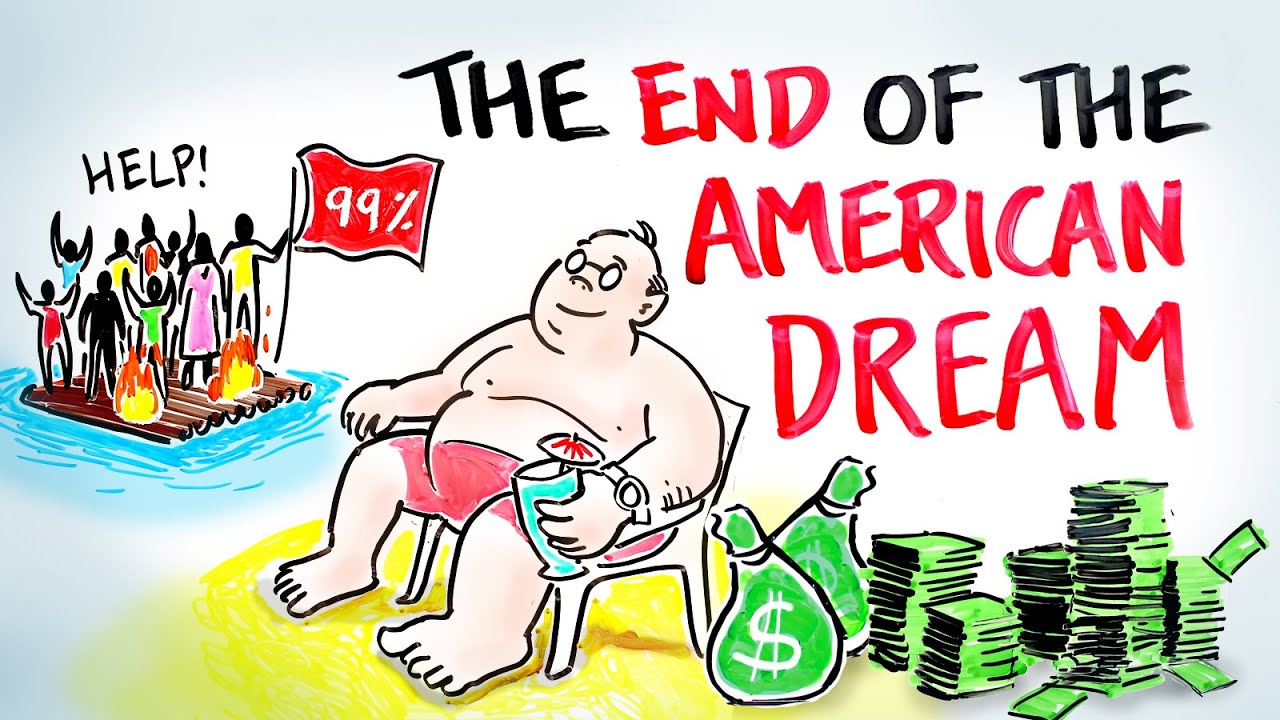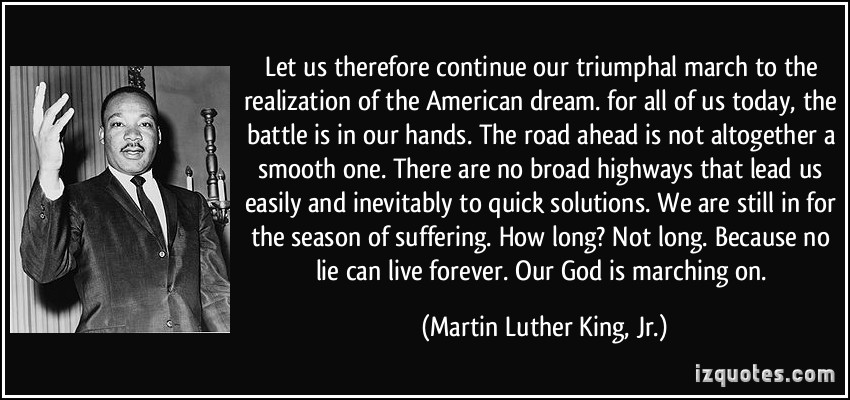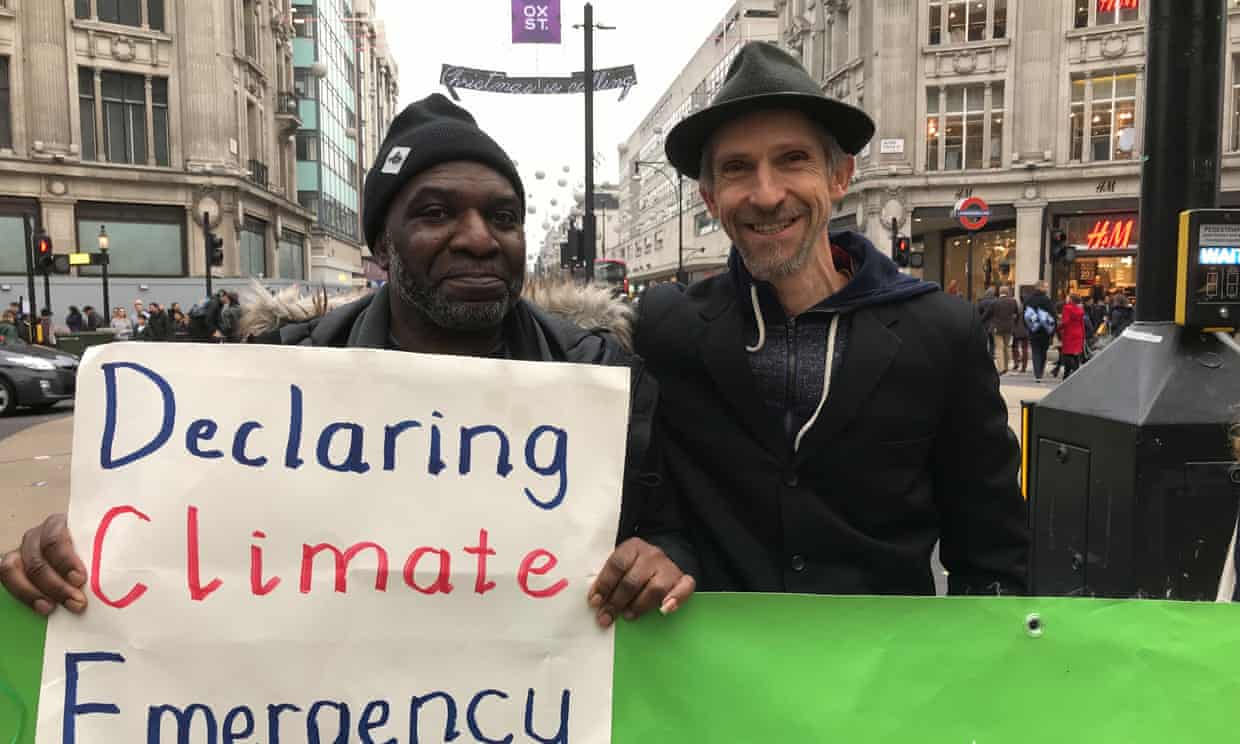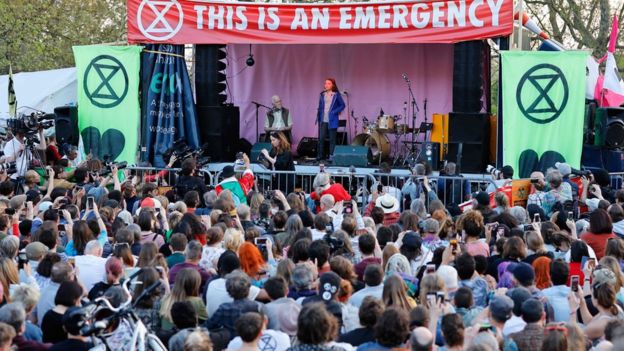- Details
- Written by: Kamran Mofid
- Hits: 3143

Photo: youtube.com
As noted in an article in the AlterNet, more than half of all people in the US don’t believe that the American dream is real. Fifty-nine percent of those polled in June agreed that “the American dream has become impossible for most people to achieve.” More and more Americans believe there is “not much opportunity” to get ahead.
The people in America have reached this conclusion for a very simple reason: It’s true. The key elements of the American dream—a living wage, retirement security, the opportunity for one’s children to get ahead in life—are now unreachable for all but the wealthiest. And it’s getting worse. As inequality increases, the fundamental elements of the American dream are becoming increasingly unaffordable for the ‘99%’.
Here are seven ways the American dream is dead on its track.
- Most people can’t get ahead financially.
If the American dream means a reasonable rate of income growth for working people, most people can’t expect to achieve it.
As Ben Casselman observes at fivethirtyeight.com, the middle class hasn’t seen its wage rise in 15 years. In fact, the percentage of middle-class households in this nation is actually falling. Median household income has fallen since the financial crisis of 2008, while income for the wealthiest of Americans has actually risen.
Thomas Edsall wrote in the New York Times that “Not only has the wealth of the very rich doubled since 2000, but corporate revenues are at record levels.” Edsall also observed that, “In 2013, according to Goldman Sachs, corporate profits rose five times faster than wages.”
- The stay-at-home parent is a thing of the past.
There was a time when middle-class families could lead a comfortable lifestyle on one person’s earnings. One parent could work while the other stayed home with the kids.
Those days are gone. As Elizabeth Warren and co-author Amelia Warren Tyagi documented in their 2003 book, The Two-Income Trap, the increasing number of two-earner families was matched by rising costs in a number of areas such as education, home costs and transportation.
These cost increases, combined with wage stagnation, mean that families are struggling to make ends meet—and that neither parent has the luxury of staying home any longer. In fact, parenthood has become a financial risk. Warren and Tyagi write that “Having a child is now the single best predictor that a woman will end up in financial collapse.” This book was written over a decade ago; things are even worse today.
- The rich are more debt-free. Others have no choice.
Most Americans are falling behind anyway, as their salary fails to keep up with their expenses. No wonder debt is on the rise. As Joshua Freedman and Sherle R. Schwenninger observe in a paper for the New America Foundation, “American households… have become dependent on debt to maintain their standard of living in the face of stagnant wages.”
This “debt-dependent economy,” as Freedman and Schwenninger call it, has negative implications for the nation as a whole. But individual families are suffering too.
Rani Molla of the Wall Street Journal notes that “Over the past 20 years the average increase in spending on some items has exceeded the growth of incomes. The gap is especially poignant for those under 25 years old.”
There are increasingly two classes of Americans: Those who are taking on additional debt, and the rich.
- Student debt is crushing a generation of non-wealthy Americans.
Education for every American who wants to get ahead? Forget about it. Nowadays you have to be rich to get a college education; that is, unless you want to begin your career with a mountain of debt. Once you get out of college, you’ll quickly discover that the gap between spending and income is greatest for people under 25 years of age.
Education, as Forbes columnist Steve Odland put it in 2012, is “the great equalizer… the facilitator of the American dream.” But at that point college costs had risen 500 percent since 1985, while the overall consumer price index rose by 115 percent. As of 2013, tuition at a private university was projected to cost nearly $130,000 on average over four years, and that’s not counting food, lodging, books, or other expenses.
Public colleges and universities have long been viewed as the get-ahead option for all Americans, including the poorest among us. Not anymore. The University of California was once considered a national model for free, high-quality public education, but today tuition at UC Berkeley is $12,972 per year. (It was tuition-free until Ronald Reagan became governor.) Room and board is $14,414. The total cost of on-campus attendance at Berkeley, including books and other items, is estimated to be $32,168.
The California story has been repeated across the country, as state cutbacks in the wake of the financial crisis caused the cost of public higher education to soar by 15 percent in a two-year period. With a median national household income of $51,000, even public colleges are quickly becoming unaffordable.
Sure, there are still some scholarships and grants available. But even as college costs rise, the availability of those programs is falling, leaving middle-class and lower-income students further in debt as out-of-pocket costs rise.
- Vacations aren’t for the likes of you anymore.
Think you’d like to have a nice vacation? Think again. According to a 2012 American Express survey, Americans who were planning vacations expected to spend an average of $1,180 per person. That’s $4,720 for a family of four. But then, why worry about paying for that vacation? If you’re unemployed, you can’t afford it. And even if you have a job, there’s a good chance you won’t get the time off anyway.
As the Center for Economic and Policy Research found in 2013, the United States is the only advanced economy in the world that does not require employers to offer paid vacation to their workers. The number of paid holidays and vacation days received by the average worker in this country (16) would not meet the statutory minimum requirements in 19 other developed countries, according to the CEPR. Thirty-one percent of workers in smaller businesses had no paid vacation days at all.
The CEPR also found that 14 percent of employees at larger corporations also received no paid vacation days. Overall, roughly one in four working Americans gets no vacation time at all.
Rep. Alan Grayson, who has introduced the Paid Vacation Act, correctly notes that the average working American now spends 176 hours more per year on the job than was the case in 1976.
Between the pressure to work more hours and the cost of vacation, even people who do get vacation time—at least on paper—are hard-pressed to take any time off. That’s why 175 million vacation days go unclaimed each year.
- Even with health insurance, medical care is increasingly unaffordable for most people.
Medical care when you need it? That’s for the wealthy.
The Affordable Care Act was designed to increase the number of Americans who are covered by health insurance. But health coverage in this country is the worst of any highly developed nation—and that’s for people who have health insurance.
Every year the Milliman actuarial firm analyzes the average costs of medical care, including the household’s share of insurance premiums and out-of-pocket costs, for a family of four with the kind of insurance that is considered higher quality coverage in this country: a PPO plan which allows them to use a wider range of healthcare providers.
Even as overall wealth in this country has shifted upward, away from middle-class families, the cost of medical care is increasingly being borne by the families themselves. As the Milliman study shows, the employer-funded portion of healthcare costs has risen 52 percent since 2007, the first year of the recession. But household costs have risen by a staggering 73 percent, or 8 percent per year, and now average $9,144. In the same time period, Census Bureau figures show that median household income has fallen 8 percent.
That means that household healthcare costs are skyrocketing even as income falls dramatically.
The recent claims of “lowered healthcare costs” are misleading. While the rate of increase is slowing down, healthcare costs are continuing to increase. And the actual cost to working Americans is increasing even faster, as corporations continue to maximize their record profits by shifting healthcare costs onto consumers. This shift is expected to accelerate as the result of a misguided provision in the Affordable Care Act which will tax higher-cost plans.
According to an OECD survey, the number of Americans who report going without needed healthcare in the past year because of cost was higher than in 10 comparable countries. This was true for both lower-income and higher-income Americans, suggesting that insured Americans are also feeling the pinch when it comes to getting medical treatment.
As inequality worsens, wages continue to stagnate, and more healthcare costs are placed on the backs of working families, more and more Americans will find medical care unaffordable.
- Americans can no longer look forward to a secure retirement.
Want to retire when you get older, as earlier generations did, and enjoy a secure life after a lifetime of hard work? You’ll get to… if you’re rich.
There was a time when most middle-class Americans could work until they were 65 and then look forward to a financially secure retirement. Corporate pensions guaranteed a minimum income for the remainder of their life. Those pensions, coupled with Social Security income and a lifetime’s savings, assured that these ordinary Americans could spend their senior years in modest comfort.
No longer. As we have already seen, rising expenses means most Americans are buried in debt rather than able to accumulate modest savings. That’s the main reason why 20 percent of Americans who are nearing retirement age haven’t saved for their post-working years.
Meanwhile, corporations are gutting these pension plans in favor of far less general programs. The financial crisis of 2008, driven by the greed of Wall Street one percenters, robbed most American household of their primary assets. And right-wing “centrists” of both parties, not satisfied with the rising retirement age which has already cut the program’s benefits, continue to press for even deeper cuts to the program.
One group, Natixis Global Asset Management, ranks the United States 19th among developed countries when it comes to retirement security. The principal reasons the US ranks so poorly are 1) the weakness of our pension programs; and 2) the stinginess of our healthcare system, which even with Medicare for the elderly, is far weaker than that of nations such as Austria.
Economists used to speak of retirement security as a three-legged stool. Pensions were one leg of the stool, savings were another and Social Security was the third. Today two legs of the stool have been shattered, and anti-Social Security advocates are sawing away at the third.
Conclusion
Vacations; an education; staying home to raise your kids; a life without crushing debt; seeing the doctor when you don’t feel well; a chance to retire: one by one, these mainstays of middle-class life are disappearing for most Americans. Until we demand political leadership that will do something about it, they’re not coming back.
Can the American dream be restored? Yes, but it will take concerted effort to address two underlying problems. First, we must end the domination of our electoral process by wealthy and powerful elites. At the same time, we must begin to address the problem of growing economic inequality. Without a national movement to call for change, change simply isn’t going to happen.-AlterNet
...And now the six ways to bring the American Dream back from the dead
‘Let America be the dream the dreamers dreamed -
Let it be that great strong land of love
Where never kings connive nor tyrants scheme
That any man be crushed by one above'.- Langston Hughes
‘It is time to admit that the “American Dream” is dead. Its underlying conditions – strong, consistent economic growth and a meritocracy structured to keep the rich from gaming the system – no longer hold true.
Nonetheless, an American Dream 2.0 is still possible, and it will be up to those now contending for the White House to offer a blueprint for making it a reality. For starters, America’s leaders need to explain the problem clearly. The Declaration of Independence proclaimed the “pursuit of happiness” a central feature of American life. Since 1776, each generation has sought upward social mobility; and for a long time, many – though not all – met with prosperity.
For over a century after the American civil war, breakthroughs in energy, medicine, telecommunications, and transportation reshaped America (and the world). Economic productivity grew dramatically, as did the average lifespan. And for most of this period, a rising tide really did lift most boats. Politicians from both parties embraced the national ethos that anyone could get ahead through hard work and gradually, if imperfectly, made it accessible to immigrants, non-whites, women, the disabled, and others who had historically been excluded from the promise of American life.
But when economic growth began to slow in the 1970s, voters grew frustrated, while oil shocks, Watergate, and the ignominious end of the Vietnam war compounded the public’s sense of what President Jimmy Carter called America’s “malaise”. It was against this dismal backdrop that Ronald Reagan campaigned in 1980 on a promise to deliver “Morning in America”. With the US Federal Reserve having signalled its willingness to do what was necessary to rein in inflation, taxes were cut, and America was fundamentally transformed from a country of savers into one of borrowers.
In the ensuing decades, financial leverage drove growth onward, but the American Dream was living on borrowed time. Americans were going into debt to buy foreign goods, and the producers of those goods were buying US government debt, thereby keeping interest rates low. Though Americans felt prosperous, the real economy was growing at only half its previous rate, and median wages were plateauing.
Meanwhile, the Fed busied itself trying to put out periodic fires in the financial markets. Yet it inadvertently made the problem of rising inequality even worse. By 2007, its policies had artificially expanded financial markets, where assets are held largely by the wealthy, to three times the size of the real economy.
The American Dream works only when growth is broadly shared and structural impediments to advancement are scarce. Neither is true today. According to the Congressional Budget Office, annual growth rates of 4% are not coming back – at least not anytime soon; 2% growth is the most that should be expected. Moreover, the innovations that drove growth in manufacturing employment and upward mobility in the past have been superseded by digital technologies. For all their convenience, the Amazons and Ubers of the digital economy are destroying working-class jobs and driving down wages.
Making matters worse, the US tax code has increasingly come to favour capital over labour, which helps to explain why labour’s share of national income has been declining. All told, there is too much debt for the young, too little retirement savings for the post-1945 baby boom generation, and a lack of job flexibility and security for the displaced and unemployed. Trying to get ahead has become a Sisyphean task.
Six Steps to a Better Dream
Fortunately, a better narrative is possible. We already know what we need to do to help rebalance the playing field and restore deficit-neutral growth and dynamism. For starters, we should be reducing student debt in exchange for national service in fields such as teaching, emergency services, and rural medical care. Not only is this the right thing to do, but it would also galvanise a new generation of public servants in socially important areas currently suffering from labor shortages.
My Guest Blogger Steve Szeghi: Student Loan Debt in the United States, Time to Forgive
Second, we must eliminate tax breaks – namely, the stepped-up basis loophole for estate taxes and the carried-interest rate – that widen and entrench the wealth divide. In doing so, we could unlock hundreds of billions of dollars in new tax revenue.
Third, that newfound tax revenue should be used for three key purposes. First, America needs to provide tuition-free community college to retrain its workers, many of whom have been – or eventually will be – displaced by automation and other new technologies. Second, we need a national infrastructure programme – a modern version of President Franklin D Roosevelt’s Works Progress Administration – which could employ many of those who have lost manufacturing jobs. And third, it is time to establish a national trust fund for student loans, which should then be repayable from a predetermined proportion of the student’s subsequent income for a specified number of years. Students who end up with low future incomes would pay less than they borrowed, but this would be offset by higher earners.
Values-less Education and the Death of Dreams
The Journey to Sophia: Education for Wisdom
Fourth, the federal minimum wage must not only be raised, but also be indexed to the rate of inflation. This would both help people keep up with the rising cost of living and, as the Federal Reserve Bank of Chicago has shown, increase aggregate economic activity.
Fifth, we must make access to basic childcare a universal good, or women’s participation in the labour force will continue to fall short of its potential.
And finally, we need to give everyone access to the same retirement-savings benefits as the rich; namely, through an expansion of the Thrift Savings Plan, which acts like a 401k but provides critical tax benefits that most workers currently lack.
What might an Economy for the Common Good look like?
And finally, we need to give everyone access to the same retirement-savings benefits as the rich; namely, through an expansion of the Thrift Savings Plan, which acts like a 401k but provides critical tax benefits that most workers currently lack.
Empires rise and fall – and sometimes they rise again. America’s current trajectory does not bode well. But if we act now, we can still fashion a new American Dream for the world’s largest economy.’-Alexander Friedman, The Guardian, Fri 16 Aug 2019
Mr Trump, we are not what we earn!
‘I Have a Dream’: Yearning for Dr. King’s Interconnected World

- Details
- Written by: Kamran Mofid
- Hits: 2030
A Message from Kamran Mofid to mark International Youth Day
‘On 17 December 1999, in its resolution 54/120, the United Nations General Assembly endorsed the recommendation made by the World Conference of Ministers Responsible for Youth (Lisbon, 8-12 August 1998) that 12 August be declared International Youth Day.’

Photo: larazonsanluis.com
What is the unfolding story of the next decades?
The rise of today’s youth, leading the world, with hope, inspiration, commitment, imagination and wisdom in the interest of the common good, to change our troubled world for the better
The commitment and the passion of young people is a force for change that cannot be matched or bettered. Today, the youth of the world have risen against injustice, inhumanity, greed, wars and conflicts, environmental degradation and abuse, values-less education, and more. By their actions, they are empowering and enabling us all to imagine and construct a better world in the interest of the common good.
- Details
- Written by: Kamran Mofid
- Hits: 1560
Dr. Larch Maxey, A Warrior, Campaigner and Activist for the Common Good

Larch Maxey, right, campaigning with Caul Grant for Extinction Rebellion. Photograph: Larch Maxey. PHOTO via theguardian.com
Dozens arrested after climate protest blocks five London bridges
Over 1000 Extinction Rebellion Activists Were Arrested In April – This Is What Happened To Them
Can You Hear us and Mother Earth Crying?

Photo: A painting by Berrin Duma. Photo: turkishpaintings.com
Our Sacred Earth and Mother Nature in Need of More People like Larch Maxey
‘Larch Maxey was arrested for obstruction on Southwark bridge, London, and spent nine hours in a police cell for protesting with Extinction Rebellion (XR) against Government action on climate change. Here, in a dialogue with Suzanne Bearne, he tells the telling story of his volunteerism with XR’++
But first lest we forget ‘that only 1.5 percent of accused rapists are now being prosecuted in the UK. Yet one hundred percent of the people who are trying to preserve life for our grandchildren, for our brothers and sisters in other countries who are already struggling with drought and deluge — one hundred percent of us are being prosecuted.’*
‘I’ve waited 25 years for a movement like Extinction Rebellion’
Larch Maxey is working six days a week developing and implementing strategies – while living off his savings.
Name: Larch Maxey Age: 46 Income: £0 Occupation: Full-time volunteer with Extinction Rebellion
I’m on a year’s sabbatical, and volunteering full-time with Extinction Rebellion. I’ve always been interested in the environment and social justice – I have a PhD in sustainability and was a geography lecturer and post-doctoral researcher for 17 years – and I’ve been a climate-change activist for 25 years. During 1994-5 I lived up a tree for a year as part of the No M65 campaign in Lancashire, which I co-founded. For me that was all about the climate and ecological emergency; I’ve waited 25 years for a movement like Extinction Rebellion (XR) that uses the science of social change so effectively.
I met XR at Offgrid Festival last August, and was won over by their focus on system change. The next week I brought XR to the Sunrise festival. Suddenly I was helping out on evenings and weekends, fitting in volunteering around my two jobs as co-founder of a wellbeing charity and co-director of Bright Green Futures, a social enterprise creating eco self-build communities.
I took two weeks’ annual leave to volunteer full time with XR in November, but the turning point came when I was unexpectedly arrested for obstruction of the highway on Southwark bridge on 17 November and spent nine hours in a police cell.
It gave me the chance to really reflect on my life and priorities. I saw what’s important to me and felt deep regret at not having spent the last 25 years addressing climate chaos full time. I know I was doing the best I could, and I had two kids to prioritise. Now they’re adults and this incredibly effective vehicle that is XR has come along, it became clear to me that I needed to go on sabbatical. I knew now was the time to make a difference before the threat to our existence deepens and leads to societal collapse. We only have this year to start bringing emissions down. But it really is possible if enough people join us.
I work about 14 hours, six days a week with Extinction Rebellion. My role involves helping develop and implement our strategy and ideas for actions, and linking up with international groups. This is my life’s purpose, and I couldn’t be happier and more fulfilled. I’m happy to spend every waking moment bringing this change about.
I’m currently living off my savings. I have just applied for living expenses through XR and requested £600 a month. No one gets a salary with XR. We don’t ask for the amount we’d like, but how much we need. I have savings as I’ve always saved since I was a child, even if there was nothing particular to save for. A dilemma for me has been digging into savings I’d hoped to give my children, aged 20 and 18, money towards a deposit for a home. But if we don’t turn this emergency around, there won’t be a future.
I live for free with my best friend Toby in Brixton. As well as joining XR for our big rebellions and actions, he supports XR by giving me a free room.
I’m a relaxed freegan. I keep my eyes open and look for food at every opportunity that would otherwise go to waste. Sometimes that means eating leftover food from whoever I’m hanging out with, or collecting food from a local cafe or market stall before they throw it out.
I have a flat in Totnes, where I rent a couple of rooms. My mortgage is £850 a month and is mostly covered by two lodgers. Travel sets me back about £250 a month, with most of it spent on trains to and from Totnes. Travelling by tube is expensive so I cycle around London, which I love as I get exercise and explore the city.
I do have a car that I was planning to let go of, but actually XR are going to use it for a tour of Europe, so I just spent £25 to insure someone for it.
I tend to find clothing. For example if there’s a sock on the pavement, I’ll pick it up and give it a rinse at home. I’ve just sewn up a pair of trousers. I like to repair stuff.
While lifestyle and voting can help, they’re no longer enough. We’re in an emergency and we need system change urgently. Far more important than how we vote or live is that we work together for system change and that requires mass peaceful civil disobedience. Join us.
I plan to continue working as a full-time XR volunteer until the government adopts our three demands. We need citizens’ assemblies, ordinary people deciding the policies to solve the crisis. If we don’t sort it out, our children won’t have a future.
++Larch Maxey telling his story to Suzanne Bearne was published in the Guardian on Sat 10 Aug 2019
*Anthea Lawson, We Owe it to Our Humanity to hear you, to emulate you
Extinction Rebellion: Climate protesters 'making a difference'

Greta Thunberg‘"humanity is standing at a crossroads" addressing a rally in London
"For way too long the politicians and people in power have got away with not doing anything at all to fight the climate crisis and ecological crisis. "But we will make sure they will not get away with it any longer." Photo: BBC
Thank you Extinction Rebellion for being a source of inspiration, a beacon of hope to all those who value life, nature and our sacred Mother Earth. We, too, at the GCGI, share your values and zest for life, beauty and wisdom.

At the GCGI we believe every child, young person, students, their teachers, and indeed, everybody, should have regular opportunities and ease of access to connect with nature, so they can learn to value it, appreciate it, enjoy it, prioritise it and take action to save it.
“Be like the sun for grace and mercy.
Be like the night to cover others’ faults.
Be like running water for generosity.
Be like death for rage and anger.
Be like the Earth for modesty.
Appear as you are.
Be as you appear.”-Rumi
Desperately seeking Sophia: The Wisdom of Nature
Nature heals, Nature soothes, Nature restores, Nature connects: Yes, Nature is what makes us Human!
Are you physically and emotionally drained? I know of a good and cost-free solution!
The Message to the World: Time is running out for a world at risk of war with itself, destroying the only collective home we have, Our Sacred Earth
The Time is Now to Take Action.
‘Time is running out for a world at risk…threats that were considered inconceivable, no longer are.’

Photo:littlesun.canalblog.com
The climate crisis is damaging the ability of the land to sustain humanity, with cascading risks becoming increasingly severe as global temperatures rise, according to a landmark UN report compiled by some of the world’s top scientists.
Global heating is increasing droughts, soil erosion and wildfires while diminishing crop yields in the tropics and thawing permafrost near the poles, says the report by the Intergovernmental Panel on Climate Change…’Climate crisis reducing land’s ability to sustain humanity, says IPCC
A Call to Action from Our Children and Grandchildren.
We Must Not Let Them Down!
On September 20, three days before the UN Climate Summit in NYC, young people and adults will strike all across the US and the world to demand transformative action be taken to address the climate crisis. To learn more, sign up to host a strike, or receive updates see below:
‘We, as a global society, are at a crossroads. We have a decision to make. Are we going to choose money or power or are we going to choose the future? The September 20 strike is an invitation to everyone to choose us. Choose the kids, choose humanity, choose the future.’...WE, THE FUTURE GENERATION, ASK YOU TO CHOOSE US
- World in Chaos and Despair: The Healing Power of Slow Food
- Anthea Lawson, We Owe it to Our Humanity to hear you, to emulate you
- Do you have an eye for justice and sense of duty? Then, these questions are for you.
- Come and meet the Team Human, My Favorite Team
- The tragedy of India copying the ways of the US and the UK
